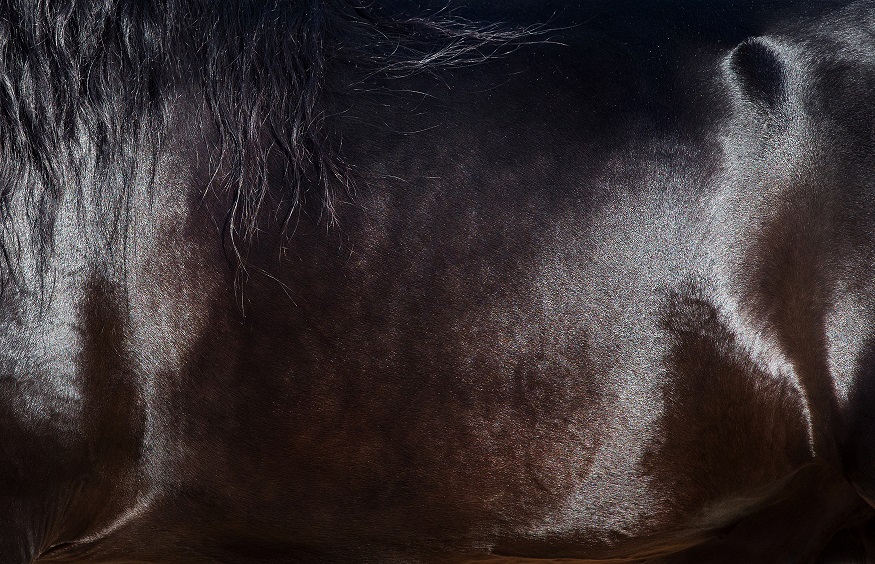Does your horse have dry, itchy skin? Are you wondering what you can do to support the condition of his skin and coat?
The skin is the largest organ of the horse’s body and has a vital role serving as a protective barrier to outside elements and giving the horse the sense of touch. The horse’s skin has 3 major layers; the outermost layer the ‘epidermis’, the middle and largest layer known as the ‘dermis’ and the ‘hypodermis’ found beneath the dermis.

The horse’s coat also serves a number of important functions such as protecting the skin from the elements (wind, rain and sun), defending against irritating insects, and the transportation of pheromones. If the condition of the coat is poor, this will affect functionality and have a negative impact on the horse.
Therefore, it is vital that as owners, we do our best to ensure our horse’s skin and coat health is the best it can be.
As the health of the horse’s skin and coat is mostly helped from the inside out, what does your horse need in his diet to maintain his skin and coat health?
Firstly, ensure the diet is balanced with the correct vitamins and minerals the horse needs for all round health. By providing your horse with these essential nutrients, you are giving their body the best chance for optimum health, including maintaining vision, growth, and the immune system. More information on the roles of specific vitamins and minerals can be found here.
To improve coat quality, ensure the diet is rich in fatty acids, preferably omega-3 over omega-6. Fatty acids are in the cell membrane layers which connect the cells that make up hair and these cells are hydrophobic, which means they don’t attract water due to the fat. This works to keep moisture in, but also to ensure they’re waterproof which can help with dry skin.
Brewer’s yeast is a great source of B vitamins which are important for skin and coat health, particularly Vitamin B7 (Biotin) which plays a role in fatty acid synthesis and amino acid metabolism. Traditionally, Biotin has always been associated with hoof health, but studies have shown that supplementation can also support coat health.
Additionally, including certain herbs in the horse’s diet has shown to be beneficial for skin and coat health. These include Nettle, Burdock, Clivers and Chamomile flowers, all of which have been included in the EquiDermis formulation, developed by Feedmark several years ago to offer nutritional support to those horses that could benefit from skin and coat support.
Besides nutrition, how can I help my horse’s skin and coat?
Grooming – this is important as regular grooming promotes good health by stimulating blood circulation under the pressure and helping to loosen dead hair and dirt. Grooming is particularly important before and after exercise; before exercise to remove any dirt where tack will sit, and after to remove sweat and scurf. A helpful guide to grooming can be found here.
Bathing – there is nothing more satisfying than giving your grubby horse a good shampoo and hose down to remove any grease and dirt. However, bathing too often can strip the skin of its natural oils and healthy microbial populations so only bath your horse when necessary.
Clipping – this is often common practice for horses in regular work during the winter months as a method to reduce sweating under thick winter coats. Clipping is also useful for horses or ponies all year round with non-shedding coats, typically with PPID (Cushing’s disease) to improve their comfort in the summer months. Although if clipping your horse, be aware that their ability to regulate temperature will decrease with the lack of hair so they may need to wear rugs to keep warm.
Rugging – There are pros and cons to rugging horses, and care should be taken not to ‘over-rug’ and cause the horse to get too hot. Whilst rugs are generally used to keep horses warm in the winter months, some horse owners will use a lightweight, rain-sheet type rug to keep the horse clean or dry. If your horse is plagued by pesky flying insects, you can use a breathable fly rug to help prevent irritation. If your horse wears a rug, just ensure it fits correctly to prevent rubbing.

